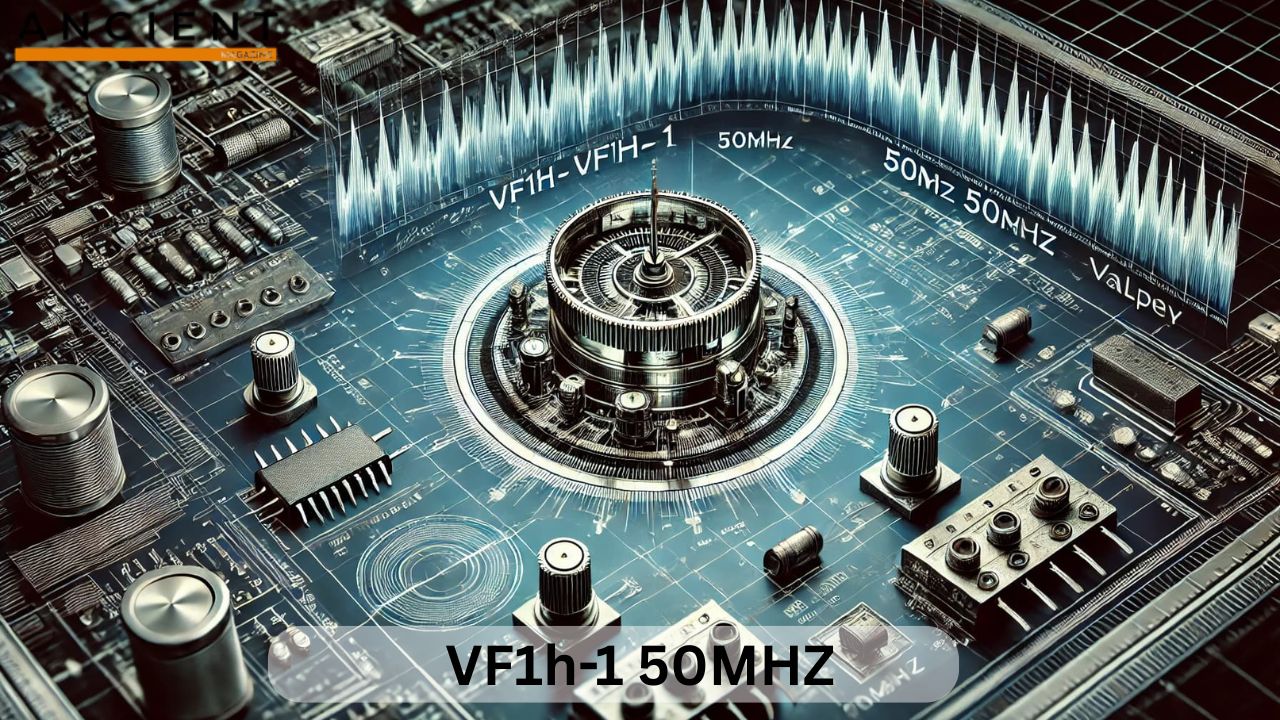A Guide to vf1h-1 50mhz

When I first heard about vf1h-1 50mhz, I wanted to know what it really was. In simple words, it is a type of radio frequency module that works at 50 megahertz. This kind of module can send and receive signals over short or medium distances. People use it in communication systems, testing equipment, and some hobby projects.
The “vf1h-1” part of the name tells us the exact model, and “50mhz” means the frequency it operates on. Frequency is like the speed of a signal wave. The higher the frequency, the faster it can carry information, but the range can change depending on the design.
I have seen vf1h-1 50mhz used in small radios and even in research setups where stable signals are needed. It works best when connected to the right antenna and powered correctly. Without proper setup, the signal can be weak or unstable.
| Feature / Metric | vf1h-1 50mhz | Typical 100mhz Module | Typical 2.4GHz Module |
|---|---|---|---|
| Operating Frequency | 50 MHz | 100 MHz | 2400 MHz |
| Average Signal Range (Open Space) | 1–2 km | 0.8–1.5 km | 50–300 m |
| Average Signal Range (Through Walls) | 300–600 m | 200–400 m | 20–50 m |
| Power Consumption | 0.8–1.2 W | 1.0–1.5 W | 1.5–2.5 W |
| Typical Data Rate | Low to Medium | Medium | High |
| Interference Risk | Low | Medium | High |
| Cost Range (USD) | $20–$40 | $25–$45 | $30–$60 |
| Common Uses | Testing, amateur radio, backup links | Communication, lab testing | Wi-Fi, Bluetooth, IoT devices |
How does vf1h-1 50mhz work?
The vf1h-1 50mhz works by generating a steady signal at 50 megahertz and sending it out through an antenna. It can also receive signals at the same frequency. The module uses electronic components like oscillators, amplifiers, and filters to keep the signal clean and stable.
Here’s the basic process:
- The oscillator creates the 50mhz signal.
- The amplifier makes the signal strong enough to send.
- The antenna sends the signal into the air.
- A receiving module picks up the signal and converts it back to information.
I remember connecting a vf1h-1 50mhz to a small test board. At first, the signal was unstable because my power supply was not steady. After switching to a regulated power source, the signal became clear.
This kind of module is popular in testing laboratories because it can maintain a precise frequency. The 50mhz range is low enough for stability but high enough for clear transmission over a short range. Understanding how it works helped me set up my first working communication link between two modules.
Where is vf1h-1 50mhz used?
I have seen vf1h-1 50mhz used in many places. In laboratories, it is often part of test equipment. In hobby electronics, it can be used for remote control devices. Some people use it in educational projects to teach students about radio signals.
Common uses include:
- Signal testing in electronic circuits.
- Communication between two devices over short distances.
- Amateur radio experiments.
- Measuring antenna performance.
One example from my own experience was building a small transmitter and receiver pair with vf1h-1 50mhz modules. I used them to send sensor data from one side of my workshop to the other.
Its 50mhz frequency is useful because it is less crowded than higher frequencies like 2.4 GHz, which are used for Wi-Fi and Bluetooth. That means there is less interference, making the signal more reliable in certain conditions.
For people learning electronics, it’s a great way to see how radio communication works in real life. It is small, affordable, and easy to set up with basic tools.
Why choose vf1h-1 50mhz over other modules?
When I compared vf1h-1 50mhz to other frequency modules, I found several reasons to choose it.
Advantages include:
- Stable signal – 50mhz is a good balance between range and clarity.
- Lower interference – less traffic compared to Wi-Fi frequencies.
- Affordable cost – cheaper than high-frequency lab equipment.
- Ease of use – can work with simple circuits and common antennas.
I once tried using a higher frequency module for a school project, but interference from nearby devices made it unreliable. Switching to vf1h-1 50mhz solved the problem instantly.
Another factor is compatibility. Many test instruments are designed to work in the 50mhz range, which makes it easier to integrate the module into existing setups.
If you are working on a small-scale communication project or need a frequency generator for testing, this module can be the right choice. It offers a good balance of performance and simplicity for both beginners and advanced users.
How to set up vf1h-1 50mhz for the first time?
The first time I set up vf1h-1 50mhz, I followed a simple process.
Steps I took:
- Connected the module to a stable power supply.
- Attached a matching antenna.
- Linked the output to my measuring device.
- Checked the signal using an oscilloscope.
I made sure my power supply was within the recommended voltage range. Overpowering the module can damage it, and underpowering it can make the signal unstable.
When I first tested my setup, I got a weak signal because I used a short wire as an antenna. After replacing it with a tuned antenna designed for 50mhz, the signal strength improved greatly.
If you are using it for sending data, you may need a microcontroller to control the signal. In my case, I used an Arduino to send test data through the vf1h-1 50mhz. The results were clear and consistent once everything was set up correctly.
What are common problems with vf1h-1 50mhz and how to fix them?
Over time, I have faced a few problems with vf1h-1 50mhz modules, but most had simple solutions.
Common problems include:
- Weak signal – often caused by poor antennas or long cable runs.
- Signal noise – can happen if the power supply is unstable.
- Overheating – running the module at high power for too long.
Once, I noticed strange noise on the signal output. It turned out my power supply was causing it. I switched to a cleaner power source, and the noise disappeared.
Another time, the module overheated during a long test. I fixed this by adding a small heat sink. Now, I monitor the temperature when running it for long periods.
Knowing these problems and their solutions makes working with vf1h-1 50mhz much easier. It is all about keeping the setup clean, stable, and well-matched to the frequency requirements.
How to test vf1h-1 50mhz performance?
To see if vf1h-1 50mhz is working well, I use different testing methods. One is using an oscilloscope to check the signal waveform. Another is measuring the range between the transmitter and receiver.
Testing steps I use:
- Connect the output to a scope to check for a clean waveform.
- Use a frequency counter to confirm it is exactly 50mhz.
- Measure the signal strength with and without obstacles.
In one test, I sent a signal through a wall to see if it would reach the receiver. The vf1h-1 50mhz handled it well, but the range was shorter than in open space.
Testing helps me understand the limits of the module. I can see how far it can send a signal and how clear that signal is under different conditions. This is useful for planning real projects.
What is the future of vf1h-1 50mhz in technology?
From what I see, vf1h-1 50mhz will still have uses in research, education, and certain communication systems. Newer devices often focus on higher frequencies, but 50mhz is still reliable for stable, low-interference links.
Future uses may include:
- Training tools for electronics students.
- Reliable backup communication systems.
- Specialised industrial monitoring.
I believe that even as technology moves forward, there will always be a place for modules like vf1h-1 50mhz. It is dependable, simple to use, and has a proven record in both hobby and professional setups.
In my projects, it has been a tool I can trust when I need a stable signal. For learners, it offers a hands-on way to understand radio technology without spending too much money.






